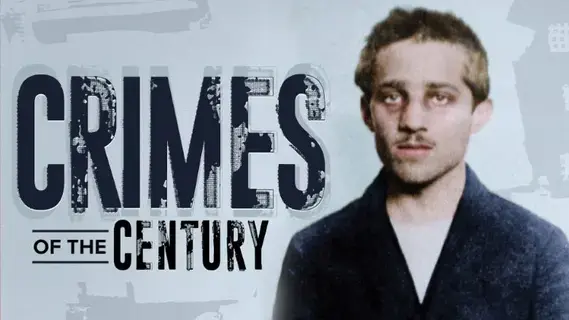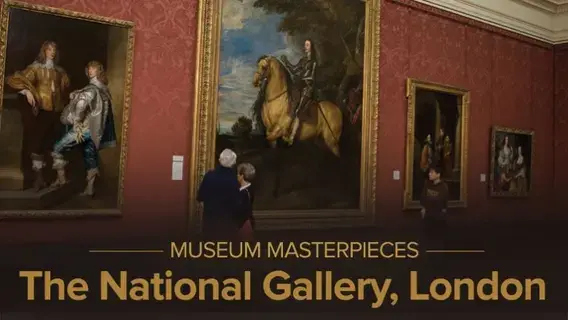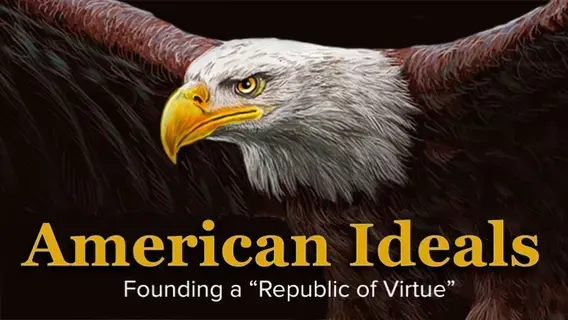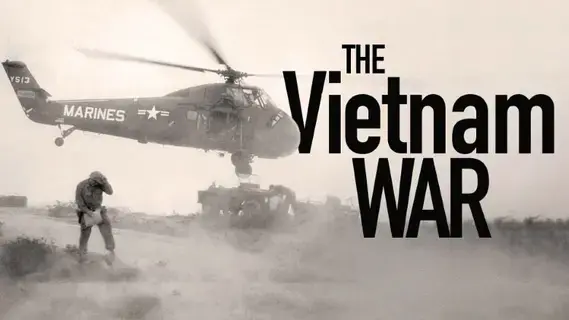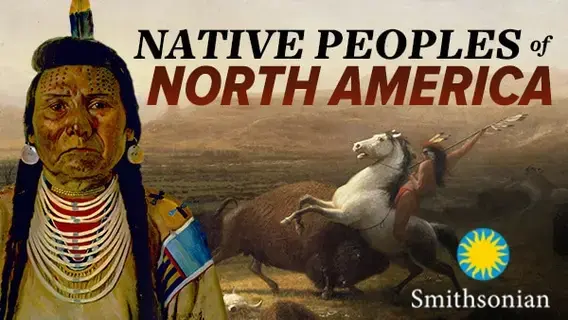Native Peoples of North America
Self-paced course
Price
$39.99
Rating
Overview
History, for all its facts and figures, names and dates, is ultimately subjective. You learn the points of view your teachers provide, the perspectives that books offer, and the conclusions you draw yourself based on the facts you were given. Hearing different angles on historical events gives you a more insightful, more accurate, and more rewarding understanding of events – especially when a new viewpoint challenges the story you thought you knew.
Now, The Great Courses has partnered with Smithsonian to bring you a course that will greatly expand your understanding of American history. This course, Native Peoples of North America, pairs the unmatched resources and expertise of the Smithsonian’s National Museum of the American Indian with the unparalleled knowledge of Professor Daniel M. Cobb of the University of North Carolina at Chapel Hill to provide a multidisciplinary view of American history, revealing new perspectives on the historical and contemporary experiences of Indigenous peoples, and their significant impact on the history of our country. Professor Cobb brings his experience as an author and teacher to recount an absolutely fascinating, larger-than-life story across a timespan of more than 500 years.
This insightful and unique 24-lecture course is filled with images and rare artifacts from Smithsonian’s famed collections, and informed by fascinating insights from Smithsonian historians. The National Museum of the American Indian, headquartered on the National Mall and visited by millions of Americans every year, is dedicated to the life, languages, literature, history, and arts of the Native Americans of the Western Hemisphere. Museum input into this course—both in helping to shape the riveting curriculum as allowing use of their spectacular collections—has allowed us create a truly engaging course that will thoroughly change your understanding of American history.
Unlearn What You Thought You Knew
One of the first myths Professor Cobb dispels is the Eurocentric view of the “Old World” and the “New World.” Noting that this terminology is the root of many narrow views, he proceeds to challenge stereotypical representations of American Indian history in each lecture. Many of the topics he shares will initially appear familiar until he presents the components and perspectives you were likely not taught.
Showcasing rare, historic artifacts and images from the Smithsonian’s National Museum of the American Indian, National Anthropological Archives, National Portrait Gallery, American Art Museum and Smithsonian Institution Archives, every lecture of this fascinating course helps disprove myths and stereotypes that many people take as fact. Narrating along with these dazzling visuals, you’ll hear Professor Cobb present a different account—or some new perspectives on—the Seven Years’ War, the American Revolution, the War of 1812, Cherokee removal, the Civil War, and the Indian Wars. You’ll delve into the seemingly familiar story of Westward Expansion—the pioneer trails, the Gold Rush, the Transcontinental Railroad—to discover the stories of the American Indian people who fought and negotiated to preserve their ancestral lands. Professor Cobb debunks many of the myths that you’ve taken as fact by providing the alternative side of the story:
- You’ll learn that the impression many of us were given about European “discoverers” conquering and controlling the Native Americans was grossly exaggerated. Native Americans remained in positions of power from the beginning and through succeeding centuries.
- You’ll hear the truth behind the many-times misinterpreted story of Pocahontas. She did not save John Smith’s life, nor did she and John Smith fall in love (and it is unclear whether she fell in love with her colonial husband John Rolfe). Professor Cobb dismisses these fairy tale versions and provides the (much more interesting) true story behind this supposedly well-known Native American heroine.
- You’ll explore how Native Americans viewed, participated in, and used the Revolutionary War to form strategic alliances. Thought to be simply a clash between colonists and the British, Native American nations pushed back against a peace treaty that didn’t involve them in order to have a seat at the table.
The Impact of Colonization
The early colonial period introduced the Columbian Exchange, which created “new worlds for all” by transforming the lives of Indigenous peoples and Europeans alike. The Columbian Exchange refers to the transference of plants, animals, and diseases between the Americas and Eurasia and Africa that began with Christopher Columbus. It is quite an understatement to say the Columbian Exchange changed everything. In fact, the processes and consequences of this convergence are overwhelming in their complexity and their ramifications can still be felt today. Consider the following:
- Coffee, pears, bananas, flour, queso, pilsners, peaches, apples, and cream are just a few of the staples we take for granted that wouldn’t become part of the modern American diet until they were introduced from abroad as a result of the Columbian Exchange.
- On the flip side, Native Americans introduced colonials (and thus the world) to maize or corn, white potatoes, sweet potatoes, and manioc or cassava, as well as peanuts, tomatoes, cocoa, squash and pumpkins, pineapples, papaya, and avocados. These commodities then helped define the cuisines of other countries. As Professor Cobb asks, can you imagine Italian food without tomatoes?
- Dandelions, sow thistle, shepherd’s purse, clover, and turf grass wouldn’t exist in North America unless the colonials had brought them. Without turf grass, football, soccer, and baseball and America’s lawns would be quite different.
- When Columbus returned to the new world in 1493, he brought a host of animals that Indigenous people had never seen before, including donkeys, goats, sheep, chickens, pigs, cattle, and horses – none of which would exist in America otherwise. It may be surprising to discover that “Horse Nations,” such as the Lakota, Comanche, and Apache—portrayed as the stereotypical horse-riding Indians of the Plains—were a product of the Columbian Exchange.
This period of exchange was responsible for much of what we consider staple foods of America, as well as introducing the rest of the world to commodities they would never have accessed otherwise. As you journey through this course, you’ll be introduced to the many ramifications—both positive and negative—of a myriad of historical events that have long been told from only one side.
Discover the Unsung Heroes
There are countless stories of Native Americans whose achievements, sacrifices, or contributions have long been unacknowledged. With Professor Cobb’s knowledge and gift for storytelling, and aided by the hundreds of historical artworks and artifacts provided by the Smithsonian, you’ll get to know dozens of names and stories that previously went unrecognized. You’ll see that one of the marines in the iconic image of the American flag being lifted over Iwo Jima was Native American. The Carlisle Indian Industrial School was a dominant football team by the early 20th century, routinely crushing such big-school opponents as Army, Navy, Penn, Harvard, Chicago, and Yale. The Choctaws used their language to great effect during the final campaign of World War I, creating an unbreakable code for military communications. Twenty-nine Navajo men were recruited to devise a way to send and receive coded messages, creating an unbreakable codebook of 200 Navajo words used during combat in World War II.
Throughout this course, your eyes will be opened to legendary historical figures such as Pontiac, Tecumseh, John Ross, Black Kettle, Sitting Bull, and Geronimo—individuals you may already be familiar with, but may be surprised to find out what you didn’t know as Professor Cobb delivers their detailed biographies. You’ll also hear about lesser-known Native Americans who made significant contributions to the America we know today, such as Tecumseh and Tenskwatawa, or artists such as Wohaw and Fritz Scholder. And explore the role of women throughout Native American history, looking at the contributions of Laura Cornelius Kellogg, Sarah Winnemucca, Wilma Mankiller, Lili‘uokalani, Alberta Schenck, and Zitkala-Ša.
Going Beyond Wounded Knee
Native American history is often treated as though it ended in the late 19th century. Professor Cobb remedies this misconception by dedicating a full third of the course to the challenges and achievements of Native Americans in the late 19th and 20th centuries, as well as current events. Together, with evocative items and information straight from the collections and archives of the Smithsonian’s National Museum of the American Indian, you’ll hear the story of modern Native Americans, the people, challenges, and diverse cultures that came out of the 20th century and beyond. Professor Cobb unpacks well-known events and practices such as Wounded Knee and the Ghost Dance while also delving into the implications of lesser known incidents. For example, you’ll investigate the impact of World War I and World War II, reform movements such as the New Deal, and also many persistent issues including repatriation, gaming, religious rights, tribal jurisdiction, and more.
You’ll discover how in the 1960s and 1970s, Native American activism mirrored the mainstream protest movements of the era, first finding expression in literature, music, art, and higher education, and eventually making real change through legislative and judicial reform. Calling again on the Smithsonian’s exclusive archive of art, portraits, and artifacts, you’ll see key examples of how the counterculture both reflected and influenced the struggle for Native American recognition and rights.
Through these dazzling visuals, and Professor Cobb’s narration, you will come to understand that we are still in the midst of an era of Indigenous recovery and revitalization—one that has tested the limits of individual rights and tribal sovereignty. He’ll outline a few of the critical sites of contemporary struggle, including gaming, which has been the single most successful means of promoting economic development in reservation communities since it took off in the late 1980s. The first Native American operated casino opened in 1979 and shortly thereafter more than 120 tribes had followed suit. Although state governments reacted defensively, the concept of tribal sovereignty emerged victorious , which has not onlyhelped the infrastructure of the Native American communities to grow and thrive, but has helped to revitalize depressed economies by providing jobs, business opportunities, and development.
Native Peoples of North America recounts an epic story of resistance and accommodation, persistence and adaption, extraordinary hardship and survival across more than 500 years of colonial encounter. As the Smithsonian curators stated, “The past never changes. But the way we understand it, learn about it, and know about it changes all the time.” Be prepared – this course is going to change how you understand American history. And no matter how much you know about this subject, at the conclusion, you will be surprised at how much you’ve learned.
You will learn
1
How Native Americans kept or lost their lands through treaties, war, and negotiations.
2
What it meant to walk the Trail of Tears and the impact of removal on tribal nations.
3
The impact of lesser-known activists such as Hunkpapa Gall, the Oglala Crazy Horse, and the Northern Cheyenne Wooden Leg.
4
The contemporary struggle, including gaming, repatriation, religious freedom, federal recognition, self-government, legal jurisdiction, and resource development.
Similar courses
Featured articles
12 Hours
Free trial
English
Beginner




